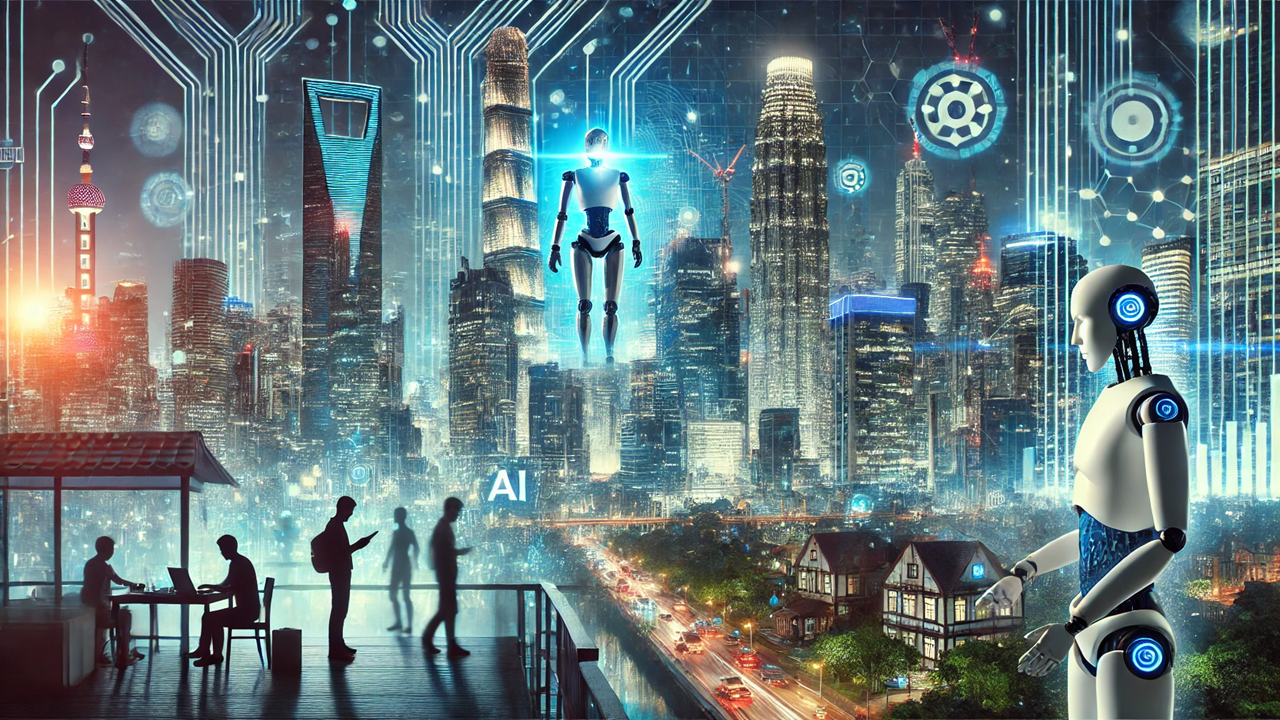Is Generative AI the Key to Growth or a Threat to High-Skill Jobs?
The World Bank report, Generative AI: Catalyst for Growth or Harbinger of Premature De-Professionalization?, explores the profound economic impacts of generative artificial intelligence (AI). While AI has the potential to boost economic growth, its benefits may be limited unless adopted across sectors. The report warns of labor market disruptions and widening inequality, particularly for developing countries that fail to adopt AI swiftly. It emphasizes the need for immediate AI integration to prevent social and economic stagnation.

A New AI Age: Growth or Job Losses?
The rise of generative artificial intelligence (AI) has sparked widespread discussions on its potential to reshape economies globally. The World Bank report, Generative AI: Catalyst for Growth or Harbinger of Premature De-Professionalization?, delves into how AI could either drive growth or upend labor markets, particularly in developing countries. While some herald AI as the next major driver of innovation, the report raises concerns about its disruptive impact on high-skill job markets.
The report, authored by Yan Liu and released by the World Bank’s Digital Development Global Practice, provides a comprehensive analysis of AI’s possible effects on economic growth, labor markets, and global trade. Through a detailed multi-sector growth model, the report quantifies the impact of AI across various scenarios, emphasizing that without cross-sector adoption and significant innovation, AI’s growth potential may remain underwhelming.
Limited Growth Without Widespread Adoption
The report's key takeaway is that while generative AI could theoretically boost productivity, its overall impact on growth will be modest unless it is adopted widely across multiple sectors. Many discussions around AI focus on its ability to revolutionize industries such as finance, technology, and high-skilled services. However, the report stresses that growth benefits will only be significant if AI extends beyond these sectors and triggers innovations that fundamentally alter consumer preferences.
In the most optimistic scenario outlined in the report, AI not only increases productivity but also transforms industries by creating entirely new products, reshaping global demand patterns. This could lead to long-term economic gains, but the report warns that achieving such benefits requires concerted efforts to integrate AI broadly into various industries.
The Threat of Job Displacement
One of the more sobering aspects of the report is its warning about “premature de-professionalization.” This term refers to the shrinking opportunities for high-skill, well-paid jobs, particularly in sectors like professional services, finance, and information technology. Generative AI tools, which can mimic human creativity and decision-making processes, are likely to reduce the need for specialized human labor in these fields.
The consequences of this trend could be especially severe in developing countries. As high-skill job opportunities dwindle, these countries may struggle to provide well-paying jobs for their rapidly growing youth populations. Without timely AI adoption, many nations risk becoming stuck as commodity exporters, unable to capitalize on the benefits of AI-driven innovation. This would result in widespread youth underemployment, diminishing social mobility, and stagnating living standards.
Developing Nations at a Crossroads
For developing countries, the stakes are particularly high. The report argues that swift AI adoption is essential to avoid being left behind in global trade and production specialization. Countries that delay integrating AI into their economies risk losing out on the opportunity to develop comparative advantages in high-skill services. Early AI adopters, on the other hand, are more likely to strengthen their positions in global markets by improving productivity and competing in the fast-growing high-tech sectors.
The report also explores the complex relationship between AI and inequality. While some argue that AI could reduce inequality by creating opportunities for lower-skilled workers, the World Bank’s analysis suggests that the opposite could happen. By lowering the barriers to entry in cognitive occupations, AI could increase competition, driving down wages in high-skill industries. This would widen the income gap between capital owners and laborers, exacerbating existing inequalities, especially in regions with already significant economic disparities.
A Call for Swift AI Adoption
The World Bank report’s message is clear: developing nations must act quickly to integrate AI across sectors or risk economic stagnation. Failure to do so may result in widening inequality, reduced social mobility, and a future where millions of young people are trapped in low-skill jobs or underemployment.
Generative AI holds the potential to drive transformative growth, but its impact will depend on how quickly and effectively countries adopt it. If AI can catalyze the creation of revolutionary products and new industries, it could become a key driver of global economic growth. However, if adoption remains limited to a few sectors, the disruptive impact on labor markets may outweigh its growth benefits.
As AI continues to evolve, policymakers in developing countries face a critical decision: embrace the technology and adapt quickly or risk falling behind in the global economy. The future of AI may be uncertain, but its potential to reshape economies and societies is undeniable.
- FIRST PUBLISHED IN:
- Devdiscourse
ALSO READ
RBI's Strategic Rate Cut: Navigating Inflation and Economic Growth
India's Labour Codes: A Catalyst for Economic Growth and Efficient Logistics
ECB Holds Steady: Inflation Goals Reaffirmed Amid Economic Growth
Madhya Pradesh Paves Pathway to Economic Growth with Mega Road Projects
Financial Strategies and Expansions: A Deep Dive into Asset Management and Economic Growth










